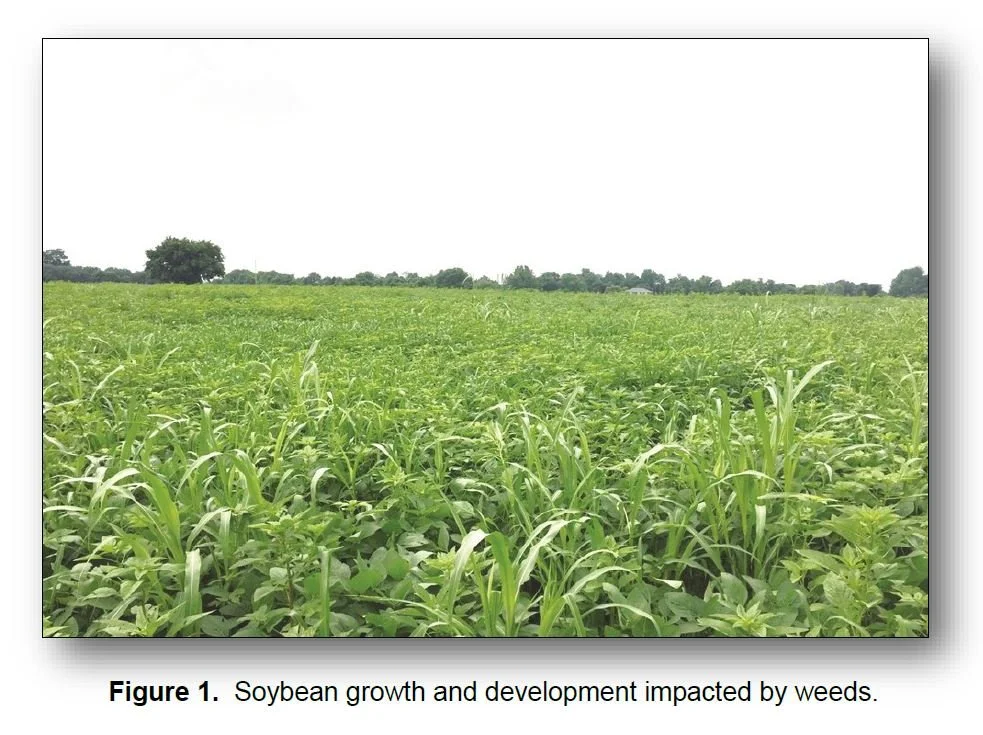Weed Control is Protecting Crop Yield Potential
Weeds are one of the most important factors that can impact crop yields and require action to effectively control each year. In times of high commodity prices and with increasing crop yield potentials it becomes even more critical to obtain maximum economic returns by protecting crop yield from potential losses caused by weeds interfering with crop production. For example, in soybean when yield loss is 5% or less and with soybean priced at $9.00 per bushel potential economic losses are estimated to be less than $30.00 per acre (Table 1). A 2 to 3 bu/A loss may not be economically feasible to protect. At $16.00 per bushel, projected economic loss would be $30.00 to $50.00 per acre. On the other hand, if weeds cause a 10% yield loss or more when soybean are at $16.00 per bushel the economic loss can exceed more than $60.00 per acre. As illustrated in Table 1 a 15% yield loss with a given yield potential of 60 bu/A could result in nearly $144.00 per acre loss.
Similarly, in corn when yield loss is 5% or less and corn is valued at $3.00 per bushel the estimated economic loss is no more than $30.00 per acre (Table 2). However, at a 200 bu/A yield potential and $7.00 per bushel corn prices, the economic cost at 5% yield loss could be $70.00 per acre. Furthermore, when yield potential is at 200 bu/A and yield loss caused by weeds exceed 10 to 15% the economic loss could be $140.00 and $210.00 per acre, respectively, when corn prices are at $7.00 per bushel. Thus, with higher commodity prices the return on your in-vestment for obtaining good weed control becomes more critical to protect against economic losses in soybean and corn production.
Developing a weed control strategy this season to protect yield may be more challenging since some of the key herbicide products needed for effective weed control are expected to be less available due to limited supply. It will require additional management skills to develop an effective plan. Below are a few key considerations as you develop your strategies.
Know Your Weeds
Be familiar with some of the key weeds that can effect soybean and corn production. For example, weeds such as giant ragweed can be very competitive at very low populations; moderate to high populations of weedy grasses can also reduce crop yield. Other weeds such as Palmer amaranth, waterhemp, and marestail are resistant to key herbicide modes of action and can affect crop yields if left uncontrolled. Some weeds such as the annual morning-glories and other vines may not only impact crop yield, but also interfere with crop harvest.
Develop a Robust Plan
Most effective weed control programs in corn and soybean utilize a preemergence/postemergence [PRE/POST] combination of treatments. Preemergence treatments consist of soil residual herbicides applied at or before planting followed by targeted postemergence applications. The overall strategy is to develop a program that makes use of herbicide treatments that provide active ingredients with at least two, if not three or four, different sites of action to target key weeds, particularly difficult to control weeds such as Palmer amaranth and waterhemp. Relying on just one herbicide active ingredient (site of action) and total postemergence treatments has led to some of the herbicide-resistant weeds we now encounter. For many soil residual herbicides to be effective it is important to apply before weeds germinate from seed. Thus, most are applied at planting or before crop emergence, but in some cases additional residuals applied in combination with a postemergence treatment may be justified. To pick the best soil residual herbicide products it is helpful to know the spectrum of weeds that exist in individual fields.
Timeliness of Foliar Applications
Whether applying foliar burndown herbicides or in-season postemergence treatments, timing the application is critically important. The purpose of foliar preplant herbicide applications is to “burndown” the existing vegetation to start with a clean seedbed. Knowing that glyphosate availability is limited this season, heavier reliance on other herbicides may be needed. It may be more critical to select a combination of products to achieve a clean seedbed. On the other hand, when weedy grasses such as annual ryegrass and little barley are present, glyphosate may be a key component needed to tackle these grasses. Furthermore, for in-season postemergence applications the size of the weeds matter. Smaller, actively growing weeds are easier to control than larger more mature plants. In addition, controlling small weeds also helps protect yield rather than allowing larger weeds to rob crop yields before they are removed (Figure 1).
Basically, this season will require individuals to be more vigilant in their weed control programs to protect crop yields. Field scouting should be a key component of our weed management plans.




